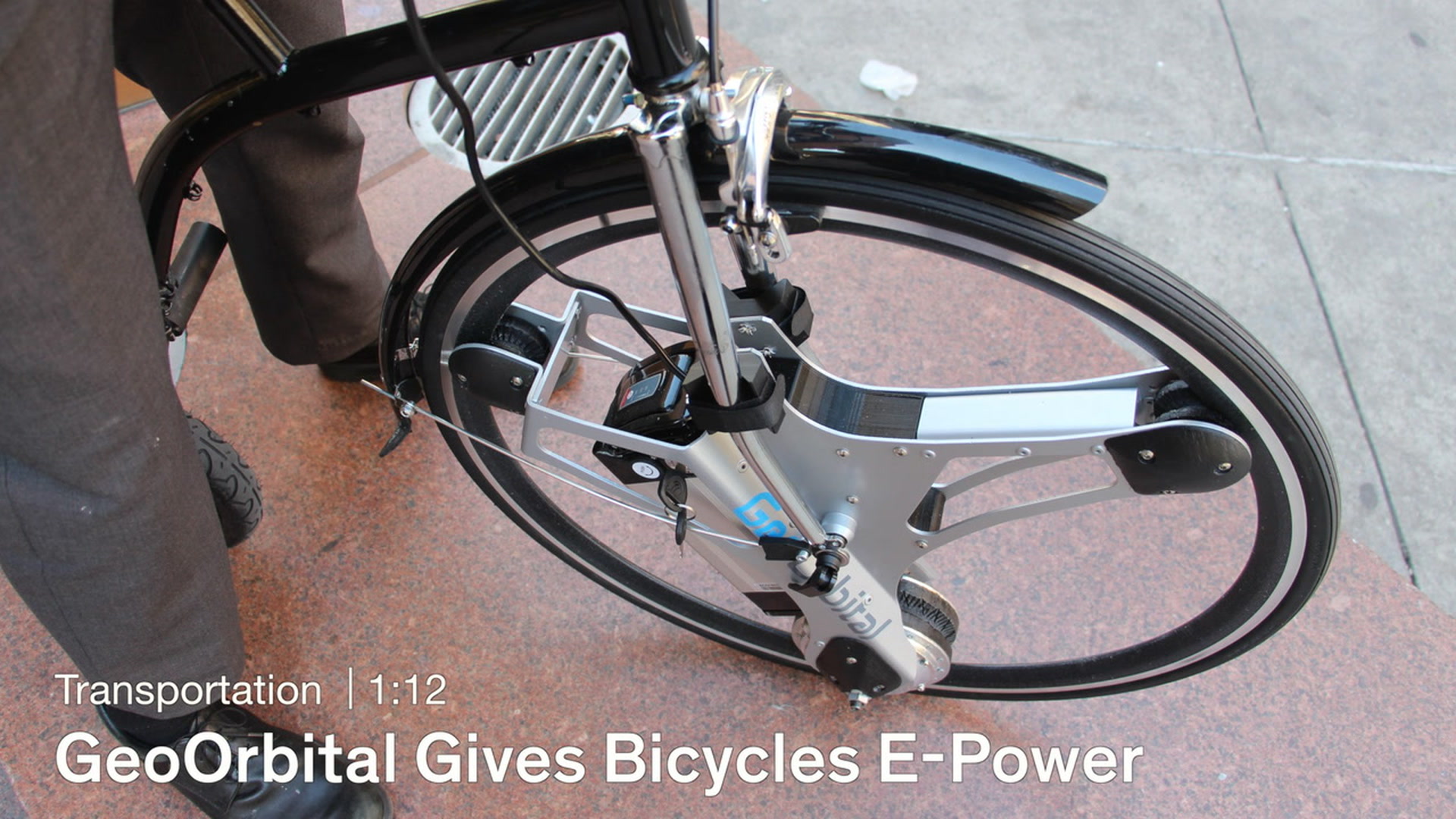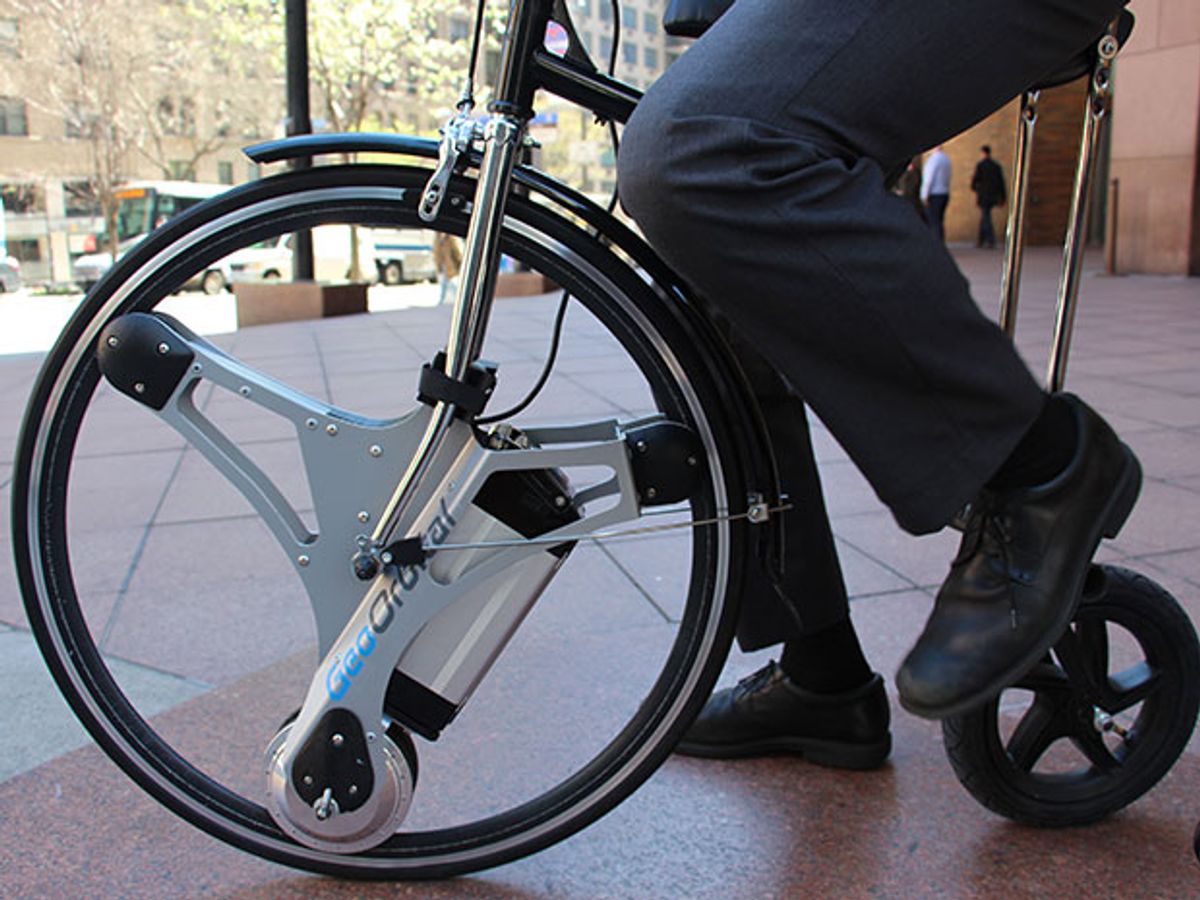The first thing I notice about a bicycle retrofitted with an electric motor and battery within its front wheel is that it demands a light thumb. Touch the throttle lever on the handlebar a little too hard, and you lurch ahead.
The second thing: I’m being watched. Even jaded New Yorkers, rushing by the IEEE Spectrum building, in midtown Manhattan, crane their necks to get a load of the bicycle and the bozo perched uneasily atop it. Nowadays, the only bike I ever mount is the stationary one in my gym.
Which raises the question of which market this invention—the GeoOrbital Wheel—is meant to serve. Most cyclists are fitness buffs; why would they want a motor-assisted leg up?
“Maybe you don’t want to arrive at the office covered in sweat,” suggests Michael Burtov, the founder of GeoOrbital, which is based in Cambridge, Mass. “And you always can put the original wheel back in if you do want to do some cardio.”
Another market, he notes, is the older demographic—those who bike for fun and exercise but need help climbing hills. It should do well in San Francisco. Here in New York City it’s a tougher sell, if only because motor-powered bicycles are illegal. In theory. Nobody arrested me, and you do see the occasional electric scooter on the streets and sidewalks.
The cost, so far, has been in the tens of thousands of dollars. Now that the bike is ready for mass-manufacturing, it will go to any Kickstarter subscriber who is prepared to pony up US $500.

Fitting the GeoOrbital wheel to a bike that had already had its front wheel removed took Burtov less than a minute. It took him a few seconds more to slip the 3.4-kilogram (7.5 pounds) battery pack into its holder, which hangs where the spokes would be, if the wheel had spokes. Instead, its rim orbits—hence the company’s name—around a circular frame. Two rubber rollers grip the inward-pointing part of the rim and translate the power of a 500-watt motor to it.
Putting the entire system inside the wheel doesn’t just makes it look cool—it makes it modular. You can imagine snapping one of these things onto a tricycle, a wheelbarrow or anything else that needed some oomph.
The wheel is covered in hard rubber, which means you’ll be missing the cushioning effect of an inner tube. Burtov says his company has done a lot of testing and tweaking to smooth the ride. Also, the wheel adds some 9 kg to the bike, and though most of the mass is slung low, close to the ground, it does seem to make turning a bit harder. “You catch on in half an hour,” Burtov says, but I rode around for only about 10 minutes.
He says the lithium-ion battery stores 360 watt-hours, enough to send the bike around 30 kilometers on electric power alone. It’ll go farther if you are willing to put your legs to work. Top speed on electric power: 30 kph (20 mph). Recharging time: 4 hours.
Not bad for Burtov, a guy who studied psychology and economics, not engineering. He built the prototype himself, then brought in mechanical engineers, to refine the design. It’s to be built in Massachusetts, using parts from around the world.
Philip E. Ross is a senior editor at IEEE Spectrum. His interests include transportation, energy storage, AI, and the economic aspects of technology. He has a master's degree in international affairs from Columbia University and another, in journalism, from the University of Michigan.



